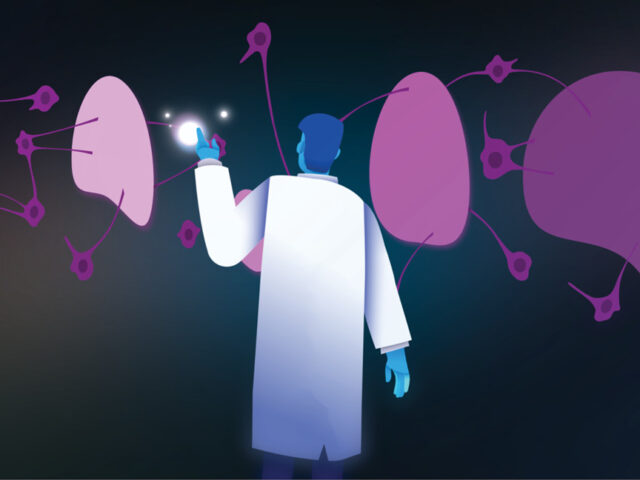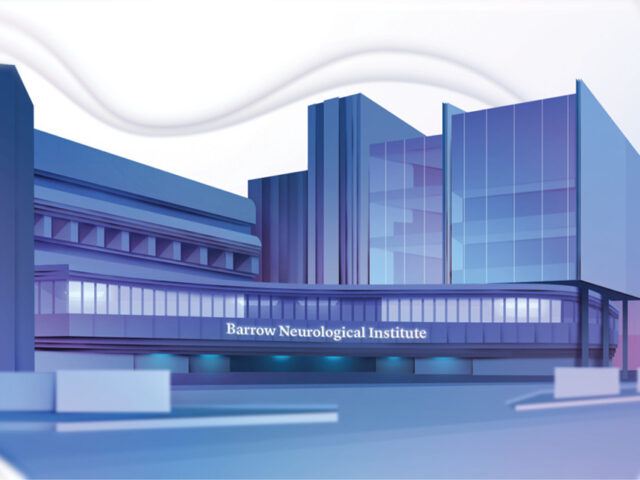
Catamenial Epilepsy
Overview
Catamenial epilepsy is a subtype of epilepsy where hormonal fluctuations during the menstrual cycle influence seizure activity. It affects women and is considered a form of hormone-sensitive epilepsy.
“Catamenial” comes from the Greek word katamenios, meaning “monthly.”
Women with catamenial epilepsy generally experience seizures throughout their monthly menstrual cycle. However, the number of seizures tends to increase during certain phases of their cycle. A drop in progesterone levels—most notably during menstruation or ovulation—or when estrogen is relatively high are the most common triggers, although seizures are known to increase during any of the following phases:
- Perimenstrual phase: When progesterone levels drop significantly just before or during menstruation.
- Periovulatory phase: When estrogen levels peak around ovulation.
- Luteal phase: When progesterone levels fluctuate and wane during the second half of a cycle.
Approximately 40 percent of the women who have epilepsy and are in their reproductive years report an increase in seizures around certain times in their cycle. However, this number is likely higher due to a lack of catamenial epilepsy awareness.
What causes catamenial epilepsy?
The fluctuation of estrogen and progesterone causes catamenial epilepsy. These essential hormones shift repeatedly throughout a woman’s menstrual cycle and during a woman’s lifespan.
Both estrogen and progesterone influence neuronal excitability—the magnitude of neurons’ response to stimulation—but they do so in different ways. While estrogen has pro-convulsant effects, meaning it promotes neuronal excitability and increases the likelihood of seizures, progesterone has anti-convulsant effects, reducing the risks of seizure activity.

Catamenial Epilepsy Symptoms
The symptoms of catamenial epilepsy overlap with those of general epilepsy, but they increase and decrease with the phases of your menstrual cycle.
If you or someone you know has catamenial epilepsy, you might experience the following symptoms:
- Auras, a sensation or perceptual disturbance that’s often experienced before a seizure
- Loss of consciousness or awareness.
- Staring off into the distance, which can coincide with repetitive actions like lip-smacking
- Confusion
- Jerking, twitching, or other involuntary movements
- Stiffening of the body, arms, and legs
- Abrupt loss in muscle tone, which can lead to falling
It’s not always easy to tell when someone is having a seizure—they can look like they’re staring at something that isn’t there or seem unusually confused or unresponsive. Other, more substantial seizures can cause a person to fall, spasm, or have uncontrollable muscle twitching. Seizures can last just a few seconds or several minutes; there may be no memory after they happen.
In addition to general symptoms of epilepsy, the hormonally-related symptoms of catamenial epilepsy can include:
- Premenstrual (PMS) symptoms: An increase in irritability, mood fluctuations, headaches, or other PMS symptoms can accompany increased seizure activity.
- Cognitive and emotional symptoms: A heightening of anxiety or depression related to menstrual changes and seizure patterns can also occur.
- Seizure triggers: Stress, sleep disturbances, or other factors commonly exacerbating seizures may be more pronounced during vulnerable phases of the menstrual cycle.
Other periods of marked and prolonged hormone fluctuations—puberty, pregnancy, perimenopause, and menopause—may also lead to changes in seizure patterns. In each of these seasons, significant changes occur to the relative levels of estrogen and progesterone.
During perimenopause, the levels of estrogen can rise and fall dramatically and unevenly, meaning that seizures can become much more frequent for a prolonged amount of time. When women reach menopause—a hallmark of one year with no menstrual cycles—estrogen levels become low and stable. As a result, women with epilepsy will often experience a reduction in seizures during this season of life.
Auras and Catamenial Epilepsy
Many people with epilepsy, including catamenial epilepsy, experience warning signs before a seizure, known as an aura. An aura can be helpful to someone diagnosed with epilepsy because it allows them to prepare themselves and, ideally, prevent injury.
An aura can include a change in vision, hearing, or taste. It can be a steady or flashing light, a color, or a shape in a person’s field of vision. It might be a specific feeling in the stomach or a strong emotion that comes “out of the blue,” like feeling fearful or a sense of de ja vu. It might be a particular and unusual smell or a feeling of dizziness. Some people with epilepsy might even see things that aren’t there in a hallucination.
Not everyone with epilepsy will experience auras, and their nature can vary from person to person, or even from one seizure to another in the same individual.
What to Do When Someone is Having a Seizure
You can’t stop a seizure once it’s in progress, and thankfully, most seizures don’t require emergency medical attention.
When you’re with somebody having a mild seizure, it’s critical you:
- Stay with the person until their seizure ends, and they’re awake
- Check for a medical bracelet
- Speak calmly, stay calm, and try to keep others calm
- Once they’re awake, guide the person to a safe place and tell them about what happened
- Offer to help them get home safely
Remember, the presence of these symptoms alone doesn’t mean you have catamenial epilepsy. A thorough evaluation by a healthcare professional is required for an accurate diagnosis.

Catamenial Epilepsy Diagnosis
Doctors usually diagnose epilepsy after someone experiences two or more seizures at least 24 hours apart that have no other identifiable cause.
When it comes to identifying catamenial epilepsy, tracking the timing of your seizures via a seizure diary that also documents your menstrual cycle is the most straightforward way to identify seizure patterns. Having irregular cycles can complicate this process, but that alone won’t rule out a catamenial epilepsy diagnosis.
While a seizure diary and a physical examination with medical history can be enough to indicate catamenial epilepsy, diagnostic tests may help provide a more complete diagnosis. These tests include:
- Neuropsychological evaluation: Because people with epilepsy often experience cognitive difficulties—problems with memory, understanding spatial patterns, or language functions—a neuropsychological examination can help explain those difficulties by identifying a seizure focus. For example, someone with left temporal lobe epilepsy often shows a different pattern of results when compared to those with right temporal lobe epilepsy.
- Imaging: A computed tomography (CT) or magnetic resonance imaging (MRI) scan can help rule out structural causes of epilepsy, such as a lesion or tumor.
- Electroencephalography (EEG): The most common epilepsy diagnostic test, an EEG records the electrical activity in the brain through electrodes on the scalp and then uses that data to look for abnormal patterns. However, an EEG does not directly diagnose catamenial epilepsy.
- Magnetoencephalography (MEG): A MEG scan is a brain-mapping technique that measures the magnetic field generated by nerve cells’ electrical activity. It can help identify where seizures originate in the brain. Again, a MEG scan is also unable to directly diagnose catamenial epilepsy.

Epilepsy Monitoring Unit
In the event of epilepsy that’s difficult to diagnose and treat, or if you’re considering an epilepsy surgery, a stay in an inpatient epilepsy monitoring unit is recommended. This allows epilepsy specialists to perform an in-depth evaluation over an extended period.
During inpatient monitoring, medical professionals observe brain wave patterns and physical activity 24 hours a day using simultaneous EEG and audio/video monitoring. Your care team then uses the data to evaluate and diagnose seizure activity, create a treatment plan, and coordinate ongoing care.
Catamenial Epilepsy Treatment
Catamenial epilepsy is primarily managed through nonsurgical treatments. That said, surgical interventions are considered in some instances.
Surgical Treatments
While surgery is not usually the first line of treatment for most types of epilepsy, your epilepsy care team may consider surgery if you meet the following criteria:
- Seizures not controlled by medication: For most people, this means a trial of at least two medications in adequate doses appropriate for the type of seizure.
- Intolerable medication side effects: If said medications produce symptoms that interfere with your ability to live normally, then surgery may be an option.
- Identifiable epileptic focus: For epilepsy surgery to be successful, a single spot or region in the brain needs to be identified as the cause of seizures.
- Operable epileptic focus: For surgery to proceed, the region causing the seizures must be accessible without causing harm or a loss of essential functions.
If catamenial epilepsy is linked to a specific brain lesion or focus, surgery to remove the affected brain tissue may help in reducing seizures. However, this is only suitable for a small subset of patients.
In rare cases, catamenial epilepsy may be linked to endometriosis involving the central nervous system, known as catamenial endometriosis. Surgery to remove endometriotic lesions may help alleviate seizures.
Other surgical procedures for catamenial epilepsy can include:
- Vagus nerve stimulation (VNS): This treatment involves a pacemaker-like device implanted under the skin of your chest and attached by a wire to the vagus nerve in the neck. The device sends mild pulses of electrical activity to the brain via the vagus nerve, which can help regulate the abnormal electrical activity causing seizures.
- Deep brain stimulation (DBS): This treatment involves electrodes implanted in a specific brain area, which is then connected to a pacemaker-like device called a pulse generator that creates electrical impulses in the affected area.
Nonsurgical Treatments
Medication is the most common treatment for catamenial epilepsy. This can include hormone therapies to help adjust your hormone levels appropriately, antiepileptic drugs (AEDs), and lifestyle modifications.
- Hormone therapy: This nonsurgical treatment targets the hormonal imbalances that exacerbate seizures during the menstrual cycle. They can include:
- Progesterone supplementation: Changes in progesterone levels are linked to catamenial seizures, and progesterone has been found to reduce seizures in clinical studies. Natural progesterone or synthetic progestins may help stabilize hormone levels and can be taken orally or vaginally.
- Hormonal contraceptives: Continuous-use oral contraceptive pills can suppress ovulation and stabilize hormone fluctuations. However, some antiepileptic drugs can interfere with hormonal contraceptives, which in turn reduces their effectiveness.
- Antiepileptic Drugs (AEDs): These anti-seizure medications are often increased just before the time in an individual’s cycle that triggers seizures. Commonly used AEDs in catamenial epilepsy include clobazam and acetazolamide, and dosages may be adjusted during specific phases to align with seizure patterns.
- Gonadotropin-releasing hormone (GnRH) agonists: These synthetic medications mimic natural GnRH produced by the hypothalamus, effectively suppressing hormone production and the menstrual cycle. Because GnRH agonists induce temporary menopause, they’re only used in severe catamenial epilepsy cases.
Other nonsurgical treatments can include:
- Diet modifications: High-fat, low-carbohydrate diets, like the ketogenic (keto) diet, have shown efficacy in reducing seizures in some patients. Why the epileptic brain responds well to these diets is not fully understood, and it’s essential to continue medications alongside any dietary modifications.
- Stress management and prioritizing sleep: Yoga, mindfulness, and meditation can help reduce stress-induced seizure triggers while maintaining regular sleep patterns and continue to be critical for seizure control.
- Rescue therapies: Medications like benzodiazepines, such as lorazepam or diazepam, may be used during the “high-risk periods” of a cycle to help prevent a cluster of seizures.
Common Questions
How common is catamenial epilepsy?
While common in women with epilepsy, the exact prevalence of catamenial epilepsy varies. Studies estimate that upwards of 50 percent of women with epilepsy experience seizure patterns influenced by their menstrual cycle—or, in other words, in one out of every two women diagnosed with epilepsy in their reproductive years. However, this percentage can and does fluctuate based on factors like age, hormonal status, and epilepsy type.
Close to one in three women with epilepsy self-report an increase in seizure frequency during specific phases of their menstrual cycle. Ultimately, catamenial epilepsy may be underdiagnosed because many women may not associate their seizures with their menstrual cycles nor be able to track their cycles closely.
Who gets catamenial epilepsy?
Catamenial epilepsy is most often reported in women of reproductive age due to the hormonal fluctuations of their menstrual cycle driving the condition. Interestingly, this condition becomes less common after menopause, a time when menstruation and the hormonal fluctuations that drive it stop entirely.
Women with focal epilepsy are more likely to experience catamenial patterns compared to those with generalized epilepsy. Hormonal sensitivities may also amplify seizure activity in other, more specific subtypes of epilepsy, such as temporal lobe epilepsy.
What is the prognosis for those with catamenial epilepsy?
The prognosis for epilepsy will depend on several factors, such as the cause of seizures, their frequency and severity, a person’s age and overall health, and the effectiveness of their epilepsy treatment. While epilepsy is a chronic condition that needs monitoring, many people can lead full and productive lives with the proper treatment and management.
Regular cycles also make it easier to predict and manage seizure patterns. However, irregular cycles—like those caused by polycystic ovary syndrome or perimenopause— can complicate catamenial epilepsy oversight. However, lifestyle choices are known to influence catamenial epilepsy once diagnosed, so it’s crucial to integrate healthy habits—like managing stress, getting enough sleep, eating a balanced diet, and avoiding alcohol and recreational drugs—to manage the condition better.
While catamenial epilepsy can be challenging to manage due to its hormonal sensitivity, many people achieve significant symptom control with the right therapeutic approach.
Can catamenial epilepsy be prevented?
While catamenial epilepsy can’t be prevented, there are ways to reduce the risk of developing the condition. They include having a healthy pregnancy when expecting—for example, avoiding tobacco and alcohol use while pregnant—using preventative measures to defend against brain injuries and lowering your risk of stroke and heart disease through a healthy diet and regular exercise.
If I have a seizure, does that mean I have epilepsy?
Not necessarily. A seizure can happen after a high fever, low blood sugar, or alcohol or drug withdrawal. If you’ve had a seizure for the first time, it’s a good idea to reach out to your healthcare provider so they can help you dissect what’s happened and try to find the root cause.











